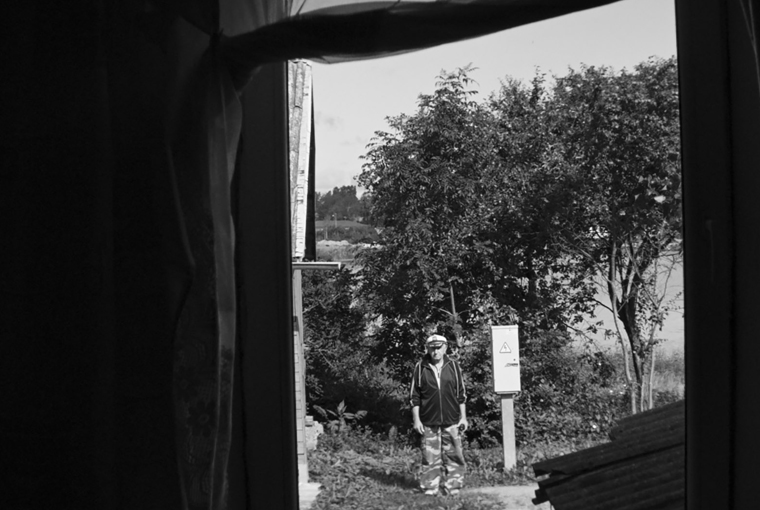
The selective ban on Russian films at various film festivals has radically altered the question of national identity. What makes a film Russian, Serbian or Romanian? In Europe, including Russia, films are largely produced through public funding. Does this mean that films receiving public funding are representative of the state? Or should a film be viewed independently of the political origins of its production process? The post-Soviet era of relatively peaceful cultural competition championed the idea that films represent cultural identities rather than geopolitical interests. In the last decades, the debate on national identity thus largely focused on determining what cultural characteristics can be discerned within the films themselves, through their stories, characters, and motifs. For Central, Eastern and South-Eastern European cinema, this has sparked lively debates on the ways in which films reflect the heritage, tradition, and history of the region. Recurrent themes within these debates concentrated, for example, on how capitalism transformed cultures in transition; on a recollection and reinterpretation of the traumas of the Second World War; on recognizing cultural variety and minority cultures.
This mode of viewing films can be compared with trying to assess the cultural identity of the Polish chałka, a type of braided bread, by looking at the contexts in which it is consumed. Imagine a homemade chałka offered during Christmas dinner in a family; a row of industrially packed chałkas for sale in a hypermarket; or the memory of a Challah, a bread similar to chałka that is consumed on Jewish holidays (as in Grynberg’s documentary Journey Into Life from 1996 about three Holocaust survivors, in which a woman remembers a delicious cake she ate at her parent’s wedding, and Grynberg, the fictional cameraman in the film, then asks her, “Wasn’t it Challah”?). Similar varieties of meaning could apply to other types of braided breads, such as the Czech and Slovak vánočka, the South-East European and Balkan cozonac, the Ukranian Kalach, the tsoureki made in Greece and Turkey (where it is called çöreği), the Armenian choreg, and the Jewish Challah. The point, however, is that in spite of these different cultural and historical meanings, all these baked goods still bear a family resemblance. That is why it is so complicated to put a Polish flag on this type of bread. And yet, “chałka” is a Polish word, there are Polish bakeries and Polish ingredients, so that the chałka may contain traditions of bakery and consumption that make it different from, say, a Czech vánočka. The implicit understanding here, is that one can meaningfully celebrate, savor, or distaste a particular type of chałka as Polish (“Warsaw’s best chałka”, “Lidl is trying to win over Poles by selling chałka”, etc.) without it representing the entire Polish nation, let alone the interests of the Polish state. In film studies, understanding the complicated cultural relations coming from such a muddled dough has been called transnational cinema.
Russia’s 2022 invasion of Ukraine has altered this implicit understanding of how cultural products are represented in our society. Film festivals, film programmers and distributors now face the tricky task of assessing whether it is legitimate to show Russian films and to what extent showing a Russian film could express complicity with the politics of Putin. During a panel about boycotting Russian films held at the goEast film festival last month, a participant suggested that it may be a good idea to provide Russian films with disclaimers that would make the political context of their production process explicit. While undoubtedly well-intended, the problem with officializing political awareness is that those who write such disclaimers would then themselves have to be evaluated with the standards of political awareness. Should another disclaimer contextualize the political intentions behind the first?
While it is easy to see the absurdity of such an endeavor, it may also be too easy to dismiss it as a clumsy idea of woke culture. When, in the aftermath of the French Revolution, Parisian museums started to fill their halls with sculptures and paintings that had hitherto been consumed in the art collections of Italian aristocrats and the Catholic church, Antoine Quatremère de Quincy found himself in a similar impasse. Mourning over the fact that the paintings had been removed from their original context, he observed that “to divide is to destruct”. Few people visiting the Louvre today are aware that many of the most famous works there came back to France from Napoleon’s military campaigns. Acknowledging the violent history of their displacement may help uninstructed visitors in understanding the history of the museum. However, once reframed in the language of political consumption, such acknowledgments may equally serve to legitimize other forms of cultural hegemony and the political interests of today’s France as a country pretending to tackle its colonial history head-on. It also makes it difficult for visitors to appreciate works of art outside prescribed forms of consumption: anti-propaganda is still propaganda. In that sense, the most interesting development coming from the current climate of political awareness in the film industry, is the acknowledgment that films are always already divided and that no film is immune to instrumentalization regardless of the origin of its production process. Faint hope lies in the possibility that acknowledging this division will not lead, unlike de Quincy would have it, to more destruction.
***
In this month’s issue, we bring you two articles co-authored by Ana Grgić and Antonis Lagarias during the recent Thessaloniki Documentary Film Festival (March 10-20). They reviewed Melting Dreams by Haidy Kancler, a film that stumbles over its own expectations in telling the story of three Afghani girls training for the Olympics, and Laila Pakalniņa’s latest film Homes, which visibly involves its documentary subjects in the filmmaking process. We are also launching our Berlinale 2022 coverage with Zoe Aiano’s review of teenage drama The Land of Sasha and her conversation with its director Yulia Trofimova. Finally, we are publishing an extensive interview (also conducted by Zoe Aiano, only at Ji.hlava 2021) with Ileana L. Selejan about Romanian film collective Kinema Ikon, with which she is affiliated as a resident historian, curator, and critic. Kinema Ikon, which arose around George Săbău in the early 1970s, is the origin of pioneering work in the history of experimental film in Romania.
We hope you enjoy our reads.
Konstanty Kuzma & Moritz Pfeifer
Editors




Leave a Comment